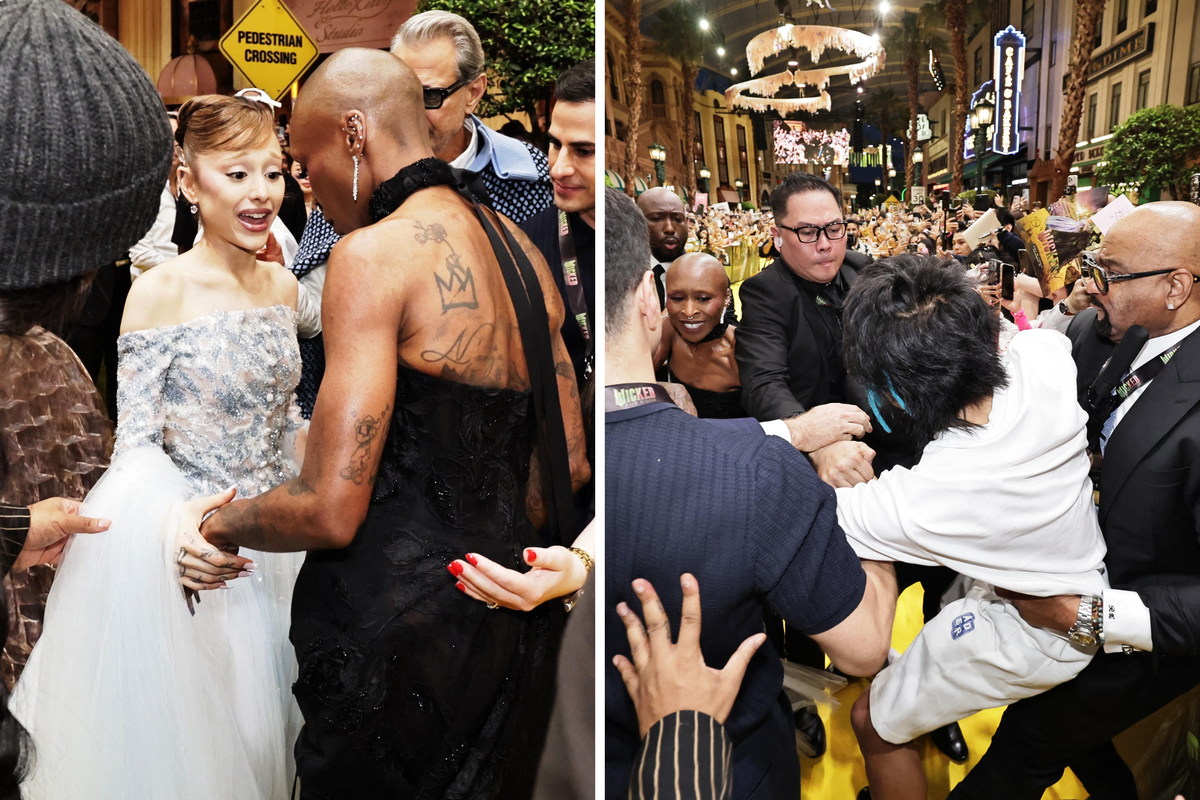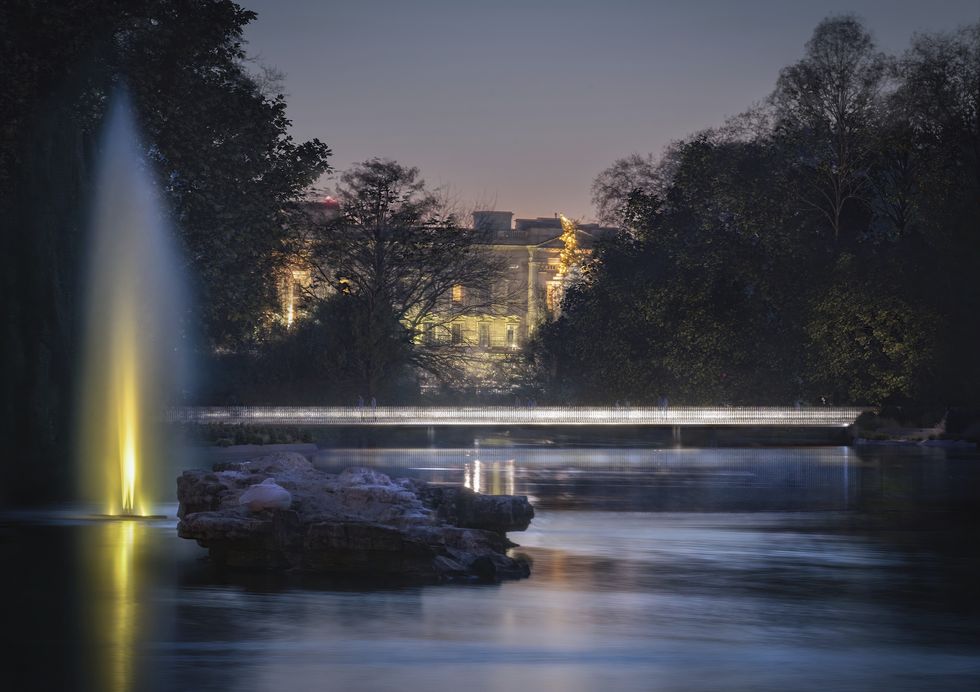
Renowned architect Lord Foster has won the bid to design the national memorial to Queen Elizabeth II, with a new bridge inspired by the late Queen’s wedding tiara.
Lord Foster, who once criticised the King for using his “privileged position” to intervene in a development, will transform St James’s Park, close to Buckingham Palace, with a “very light touch” in a “contemplative” tribute to the nation’s longest-reigning monarch.
Key features include a statue of the Queen in a new civic space called Queen Elizabeth II Place at Marlborough Gate, a new Prince Philip Gate on the other side of the park on Birdcage Walk with a statue of Philip, as well as a “family of gardens”, meandering paths and a new translucent, glass unity bridge.

Lord Foster, who was responsible for The Gherkin in London, said it was an honour and a privilege to be awarded the project, and that the bridge was symbolic of the Queen as a “unifying force”.
In an interview with the PA news agency, Lord Foster described his design as a “very light touch” which aimed to capture both the formal and informal qualities of the late Queen.
“The Queen encompassed, historically, periods of significant change, socially and technologically, but it was all very much with a light touch, and that light touch, the feeling should be that if you visit St James’s Park and the site in question later, it will still feel very familiar,” he said.
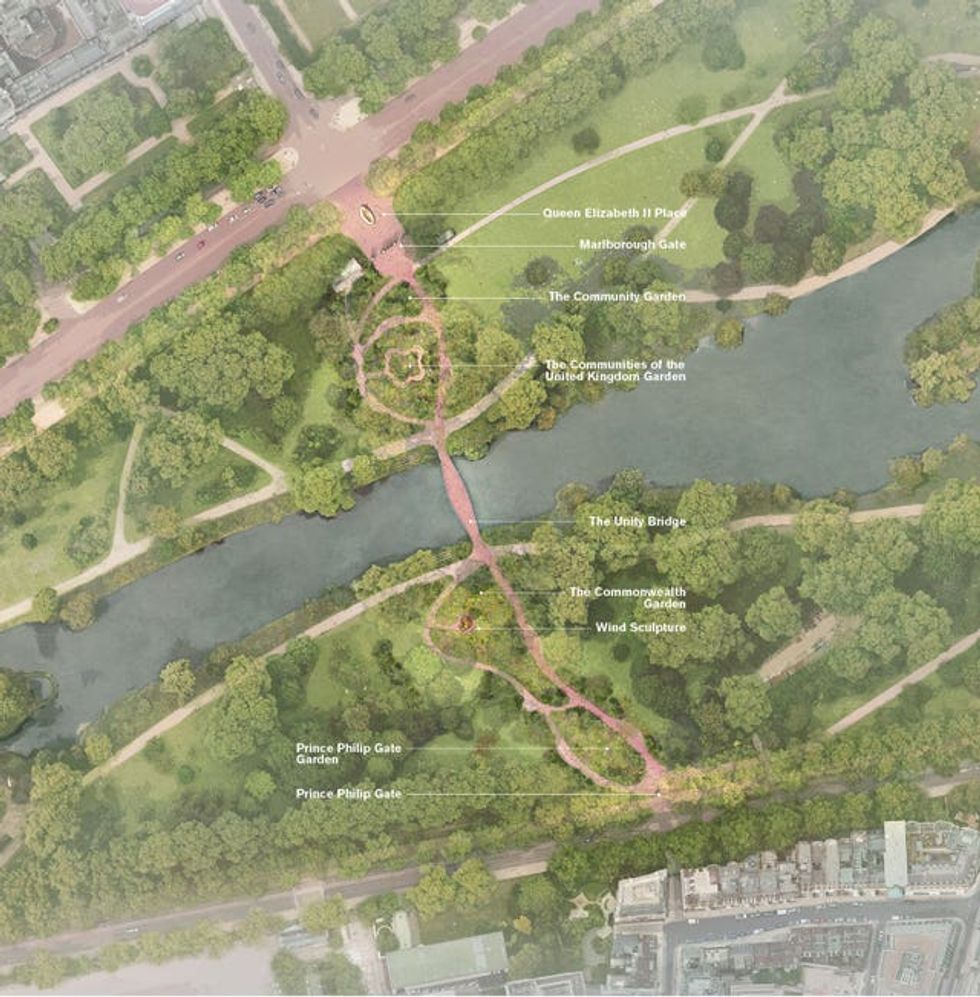
“It will feel better. It won’t be so crowded, although this number of people will be going through it, and the experience will be heightened, but it won’t be ‘Oh, my god, they’ve destroyed the tradition of this Park’.”
The architect, who was personally appointed to the Order of Merit by the Queen in 1997 in recognition of his service to architecture, said: “Like many, I knew the Queen through formal occasions, but there was this very special relationship between Her Majesty and those of us who were members of the Order of Merit.
“So we were privileged to see perhaps a more informal aspect of Her Majesty and in many ways that is mirrored in in our design.
“It is in some ways formal in its relationship to The Mall and informal in the gardens, and the perhaps breaking down those barriers in terms of narrative storytelling.”
He added: “At the heart of our masterplan is a translucent bridge symbolic of Her Majesty as a unifying force, bringing together nations, countries, the Commonwealth, charities and the armed forces.”
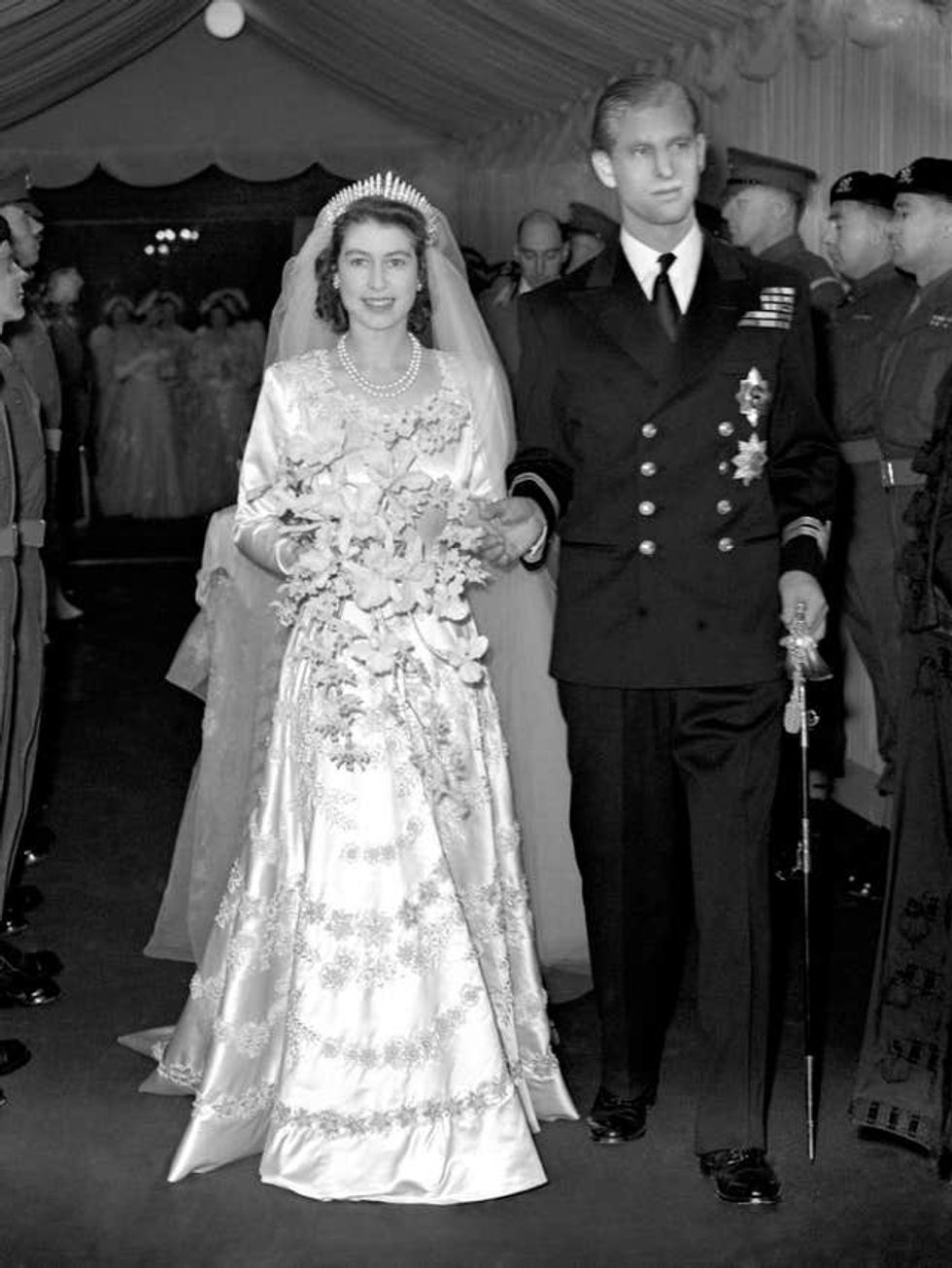
Speaking about the echoes of the Queen’s wedding tiara, Lord Foster said it came from the “idea of something that could be jewel-like could be very beautifully crafted and with a lot of loving care, so there would be the human touch to it”.
The crossing with its cast-glass balustrades will replace the existing blue bridge and has been inspired by the Queen Mary Fringe diamond tiara worn by Princess Elizabeth on her wedding day to the late Duke of Edinburgh in 1947.
Featuring 47 bars of diamonds, the tiara’s antique metal frame famously snapped when the princess was getting ready on the morning of her wedding, and had to be rushed to jewellers Garrard to be fixed.
The priceless headpiece was of great sentimental value to the Queen and she loaned it to her granddaughter Princess Beatrice for her wedding in 2020.
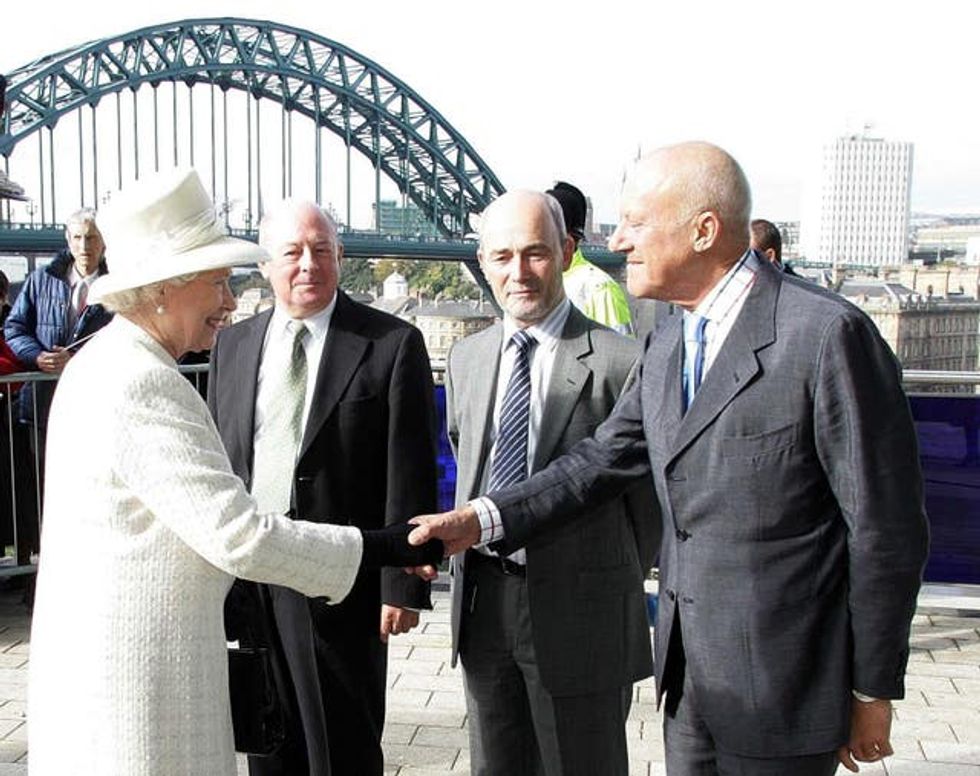
Lord Foster said his plan also depicted a statue of both the Queen and Philip side by side at the Prince Philip Gate: “We showed them together and, in a way, there was this inseparable quality which we sought to convey.”
He also suggested the bridge across the lake would be illuminated at night, and spoke of plans to float the construction, which he described as a “showcase of British architecture”, down the River Thames and put it in place discreetly and seamlessly overnight, without the need for heavy building work.
“The pursuit of lightness and performance enables us overnight to remove an existing bridge and to put back a bridge, to have a very, very gentle presence at night, almost a kind of light lighting experience, and translucent and absolutely flat, hugging the surface of the lake so seamlessly,” he said.
“There’s no heavy building work, big excavations, destroying nature. It’s a very, very light touch.”
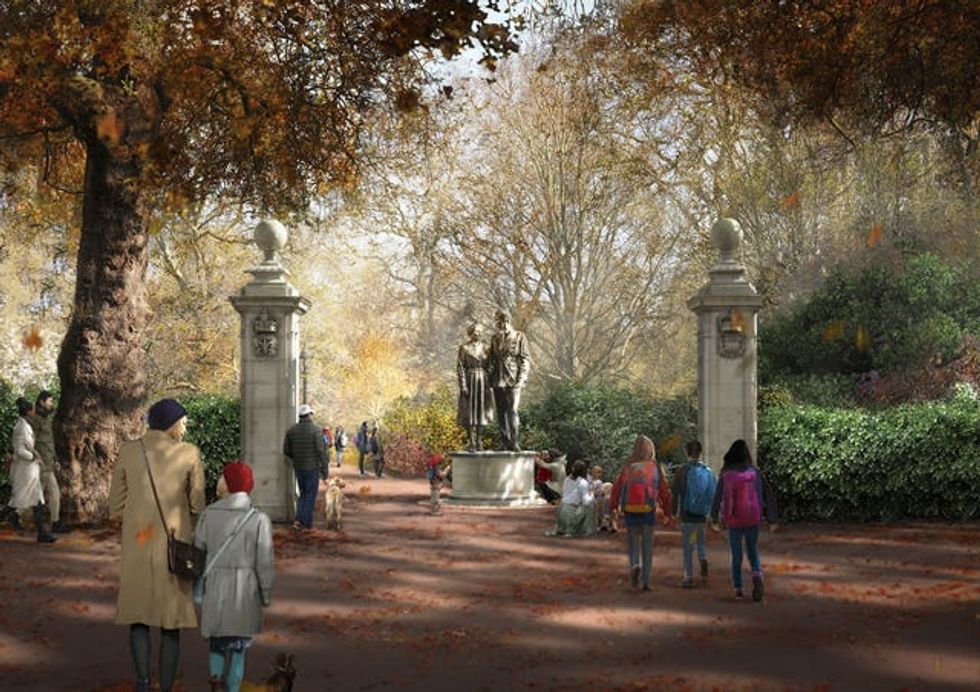
The bridge, which may feature braille inscriptions along the handrail, will be gently wider in the middle to create more space for visitors using the crossing, in comparison to the narrow, existing blue bridge.
Lord Foster added that the atmosphere of memorial would be “gentler, quieter, more contemplative, and an opportunity to rediscover, or perhaps for some to discover, the legacy of Her Majesty”.
He insisted his previous “minor differences” with the King were in the past and “absolutely insignificant” as part of the bigger picture.
In 2009, Lord Foster was one of a number of architects who publicly criticised the then-Prince of Wales over his lobbying and wrote a letter to a newspaper accusing Charles of using his “privileged position” to “skew the course” of the planning of the former Chelsea Barracks.
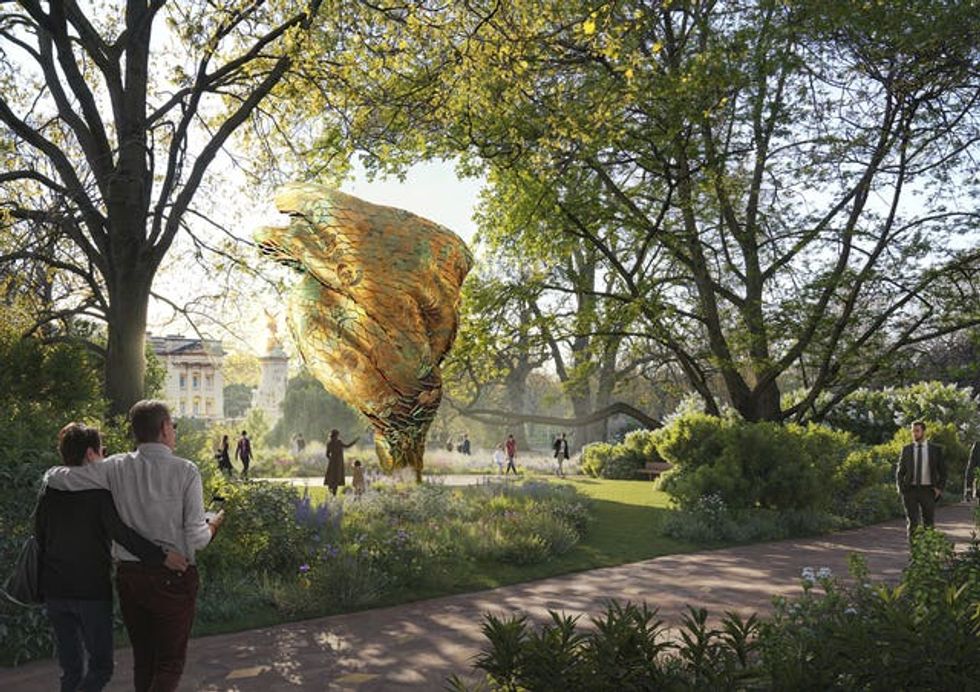
The prince, who championed traditional approaches to architecture, had reportedly privately contacted developers Qatari Diar, backed by the Qatari royal family, to recommend more classical plans by architect Quinlan Terry, rather than those by modernist architect Lord Rogers.
But Lord Foster said on Monday: “First of all, this is a memorial to the legacy of Her Majesty and, big picture, the concerns of King Charles and anybody, myself included, who has a concern for the environment, we’re all totally aligned.
“And any minor differences in the past about debates or whatever, I mean, that really is the past, and in the big picture is absolutely insignificant.”
He added: “I engaged with Prince Charles on our project for the Royal Academy, many, many years ago, and I’ve always enjoyed any such exchanges.”
Foster + Partners won the competition after being selected by the Queen Elizabeth Memorial Committee from five shortlisted designs, with feedback taken from a public vote, as well as stakeholders and cultural experts.
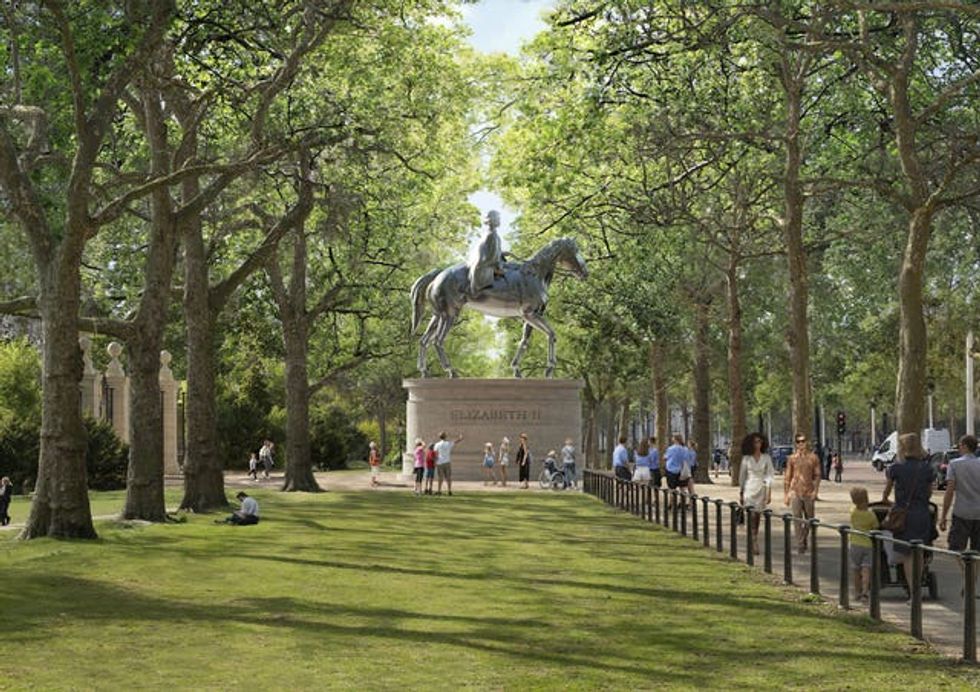
The proposal for the memorial will be subject to change, with the panel of committee members working with the team on the final design, which is expected to be unveiled in 2026, which would have been the late Queen’s 100th birthday year.
The next stage will be to appoint a sculptor and decide on the designs of the statues.
The winning team also includes artist Yinka Shonibare, ecologist Professor Nigel Dunnett, who was behind the Superbloom planting scheme in the Tower of London’s moat to celebrate the Platinum Jubilee, and landscape architect Michel Desvigne Paysagiste, and the plans features potential for audio installations of the Queen’s voice.
Other elements are a contemporary wind sculpture by Shonibare for reflection featuring floral depictions inspired by the Queen’s coronation gown, a communities of the UK garden, a Commonwealth garden and a Prince Philip Gate garden.

The Queen’s former private secretary Lord Janvrin, chairman of the Queen Elizabeth Memorial Committee, hailed the plan’s “sensitivity”.
He suggested the Queen would have particularly liked the representation of her tiara.
“Her Majesty would undoubtedly have liked the location and I think she would have picked up that echo of the tiara in the bridge,” Lord Janvrin told PA.
“I think the planting would have been of huge interest to her and the contrast between formal and informal – and the Commonwealth area would have resonated with her”.
Lord Janvrin described Lord Foster as an outstanding national figure.
“Throughout the Queen’s reign, Lord Foster was a key figure in British architecture,” he said.
“She knew him personally and made him a member of the Order of Merit, which is a personal gift way back in the late 90s.
“So, in a way, I think the fact that he has been this hugely important figure during her reign is deeply appropriate to end up with this extraordinarily important assignment at this stage.”
The decision was part of a commercial competition with the winning design made by the committee and the King having no input in the choice, but Buckingham Palace was aware of the shortlisted entries, Lord Janvrin said.
“It wouldn’t have surprised me if he’d had a good look at them,” Lord Janvrin said of the King.
Foster + Partners saw off competition from teams such as Heatherwick Studio, which suggested a bridge of togetherness with a giant canopy of stone lily pads.







